A Stylist’s Real-Talk Guide to Faking Thicker Hair (It’s Not About Genetics)
I’ve been a hairstylist for over fifteen years, and if there’s one wish I hear almost every single day, it’s for thicker hair. So many people sit in my chair feeling totally defeated, convinced their fine or thinning hair is just a genetic dead end. And I always start with the honest truth: nope, we can’t change your DNA or magically add more hair follicles to your head. That’s a job for a different kind of scientist.
In this article
But that’s where the bad news ends. Creating the look of fuller, bouncier, and healthier hair? Oh, that’s absolutely something we can do. It’s a craft, really—a mix of smart techniques, the right products, and consistent care. It’s not about some miracle cure, but about working with what you’ve got to make it look its absolute best.
I’ll never forget the time early in my career when I tried to use a heavy “smoothing” cream on my own fine hair before a big event, thinking it would tame frizz. It just made my hair look greasy and flatter than a pancake in about an hour. That’s how I learned, firsthand, that you HAVE to use products and techniques designed for your hair type. So, this isn’t just a list of random tips. This is the complete system I teach my clients and apprentices to get real, lasting volume.

First, Let’s Talk Hair Science (The Quick Version)
Before we even think about products, you’ve got to understand what you’re working with. Knowing the ‘why’ behind what we do is what separates the pros from the amateurs. Each strand of your hair isn’t just one thing; it has layers, and our goal is to get those layers in the best shape possible.
Think of a hair strand like a pencil. It’s got three key parts:
- The Cuticle: This is the outer layer, like the paint on the pencil. It’s made of tiny, overlapping scales. When they’re lying flat and sealed, your hair is shiny and smooth. But when heat or rough handling messes them up, they lift, making hair look dull and frizzy. Our number one job is to keep this layer happy and sealed.
- The Cortex: This is the middle part, like the wood of the pencil. It gives your hair its strength, elasticity, and color. It’s the bulk of the strand. Here’s a little secret: many volumizing products work by temporarily swelling this cortex, making each individual strand physically thicker for a day or two.
- The Medulla: This is the very center, like the graphite lead. Interestingly, a lot of very fine hair doesn’t even have a medulla. You can’t build one if it’s not there, but you can make the other two layers so healthy that it won’t even matter.
Understanding this is why stylists are so picky about things like water temperature. Every choice we make is designed to protect that cuticle and plump up the cortex.

Your Daily Game Plan: Building a Strong Foundation
Thicker-looking hair starts in the shower. The simple mistakes I see people make every day are often the biggest volume killers. Let’s fix those right now.
How to Wash and Condition Like a Pro
For fine hair that tends to get oily, washing it daily or every other day is usually the way to go. It’s less about how often and more about how you do it.
Start with lukewarm water. I know, hot showers feel amazing, but they strip your scalp’s natural oils and throw everything off balance, often leading to even greasier roots. Plus, hot water lifts that outer cuticle layer. A great little trick is to finish with a quick blast of cool water on your hair (not your whole body!) to help slam that cuticle shut for extra shine.
When you shampoo, concentrate the product right on your scalp. That’s where the oil and buildup live. The suds that run down the lengths are plenty to clean them without harsh scrubbing. And use the pads of your fingertips—never your nails—to give your scalp a gentle massage. It feels good and helps stimulate blood flow to the follicles.
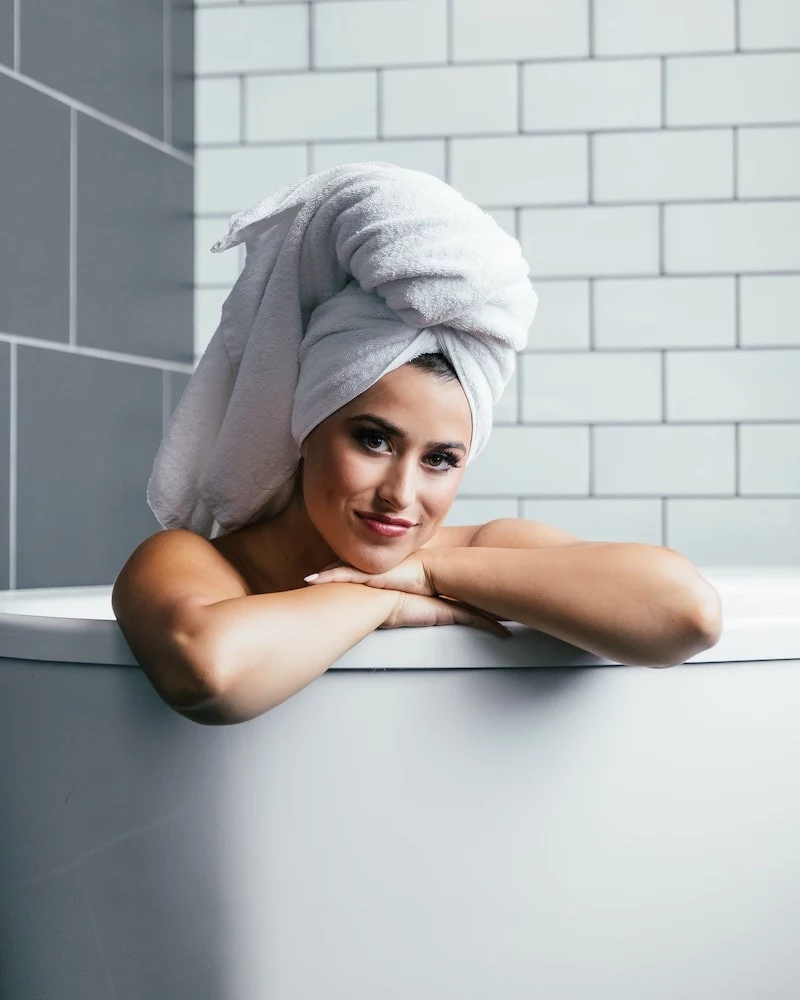
When it comes to products, look for shampoos labeled “volumizing” or “thickening.” They’re designed to be lightweight. A good drugstore option might cost you $8-$12, while professional salon formulas can be in the $25-$40 range. Honestly, start with what your budget allows; a good technique is more important than an expensive bottle.
And please, don’t skip conditioner! I know the fear—that it’ll weigh your hair down. But unconditioned hair is just asking for breakage. The trick is to use a small, dime-sized amount of a lightweight conditioner and apply it ONLY from your mid-lengths to your ends. Your roots don’t need it.
Stop Abusing Your Hair with a Towel
Your hair is at its absolute weakest when it’s wet. That vigorous towel-rubbing thing most of us do? It’s a recipe for frizz and damage. It’s like taking sandpaper to that delicate cuticle layer.
Instead, gently squeeze the excess water out with your hands first. Then, blot your hair with a microfiber towel.
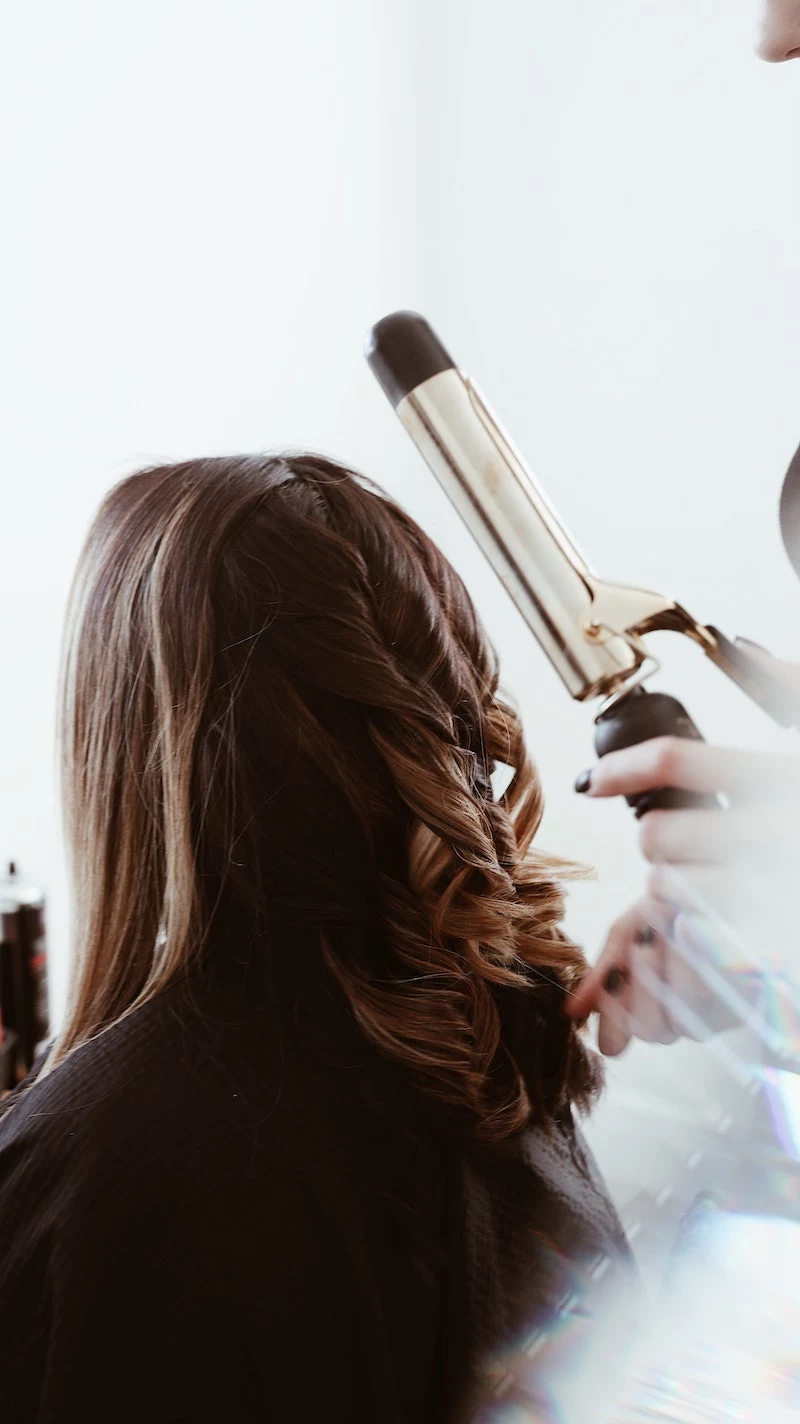
Quick Win: Don’t have a microfiber towel? No problem. Grab an old, clean cotton t-shirt. It’s just as gentle, costs you nothing, and you can try it literally right now.
Styling Secrets for Instant Fullness
Okay, your hair is clean and prepped. Now for the fun part: creating that illusion of volume. Before we start, let’s talk about what NOT to do.
A few common volume-killers to avoid:
- Heavy, silicone-based serums (look for “dimethicone” high on the ingredients list and steer clear if you have fine hair).
- Applying conditioner anywhere near your roots.
- Constantly touching your hair during the day. This transfers oils from your fingers and flattens your style.
The Foundational Blow-Dry
A good blow-dry is the single most effective way to create volume. This isn’t just about drying your hair; it’s about building lift right from the scalp.
Step 1: The Pre-Dry. After blotting with your t-shirt or microfiber towel, your hair should be damp, not dripping. Flip your head upside down and use your fingers to lift your roots while you blow-dry. Get your hair about 80% dry this way. This one step does most of the work for you.
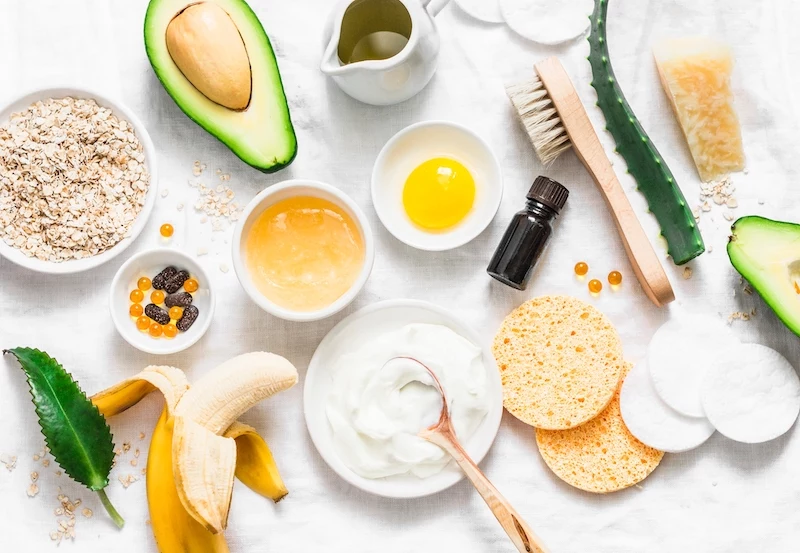
Step 2: Apply Products (Yes, Plural). Now that some water is out, your products won’t get diluted. For max volume, I recommend a two-product cocktail. Use a golf-ball-sized dollop of volumizing mousse right at the roots, and a thickening spray or lotion from the mid-lengths to ends. This combination gives you lift at the scalp and fullness all the way down.
Step 3: Section and Style. Flip back up. Clip your hair up and work in manageable, 2-inch wide sections, starting from the bottom. Using a medium-sized round brush (a 1.5 to 2-inch barrel is perfect for shoulder-length hair), lift the hair at the root and pull it upwards as you dry, aiming the dryer’s nozzle down the hair shaft to smooth the cuticle. That tension is key.
Step 4: The Cool Shot. This is the secret to making your volume last. Once a section is dry and hot, hit it with the “cool shot” button on your dryer for about 5-10 seconds before releasing the brush. Heat makes hair shapeable, but cool air locks it in place. You’ll feel the hair “set.”
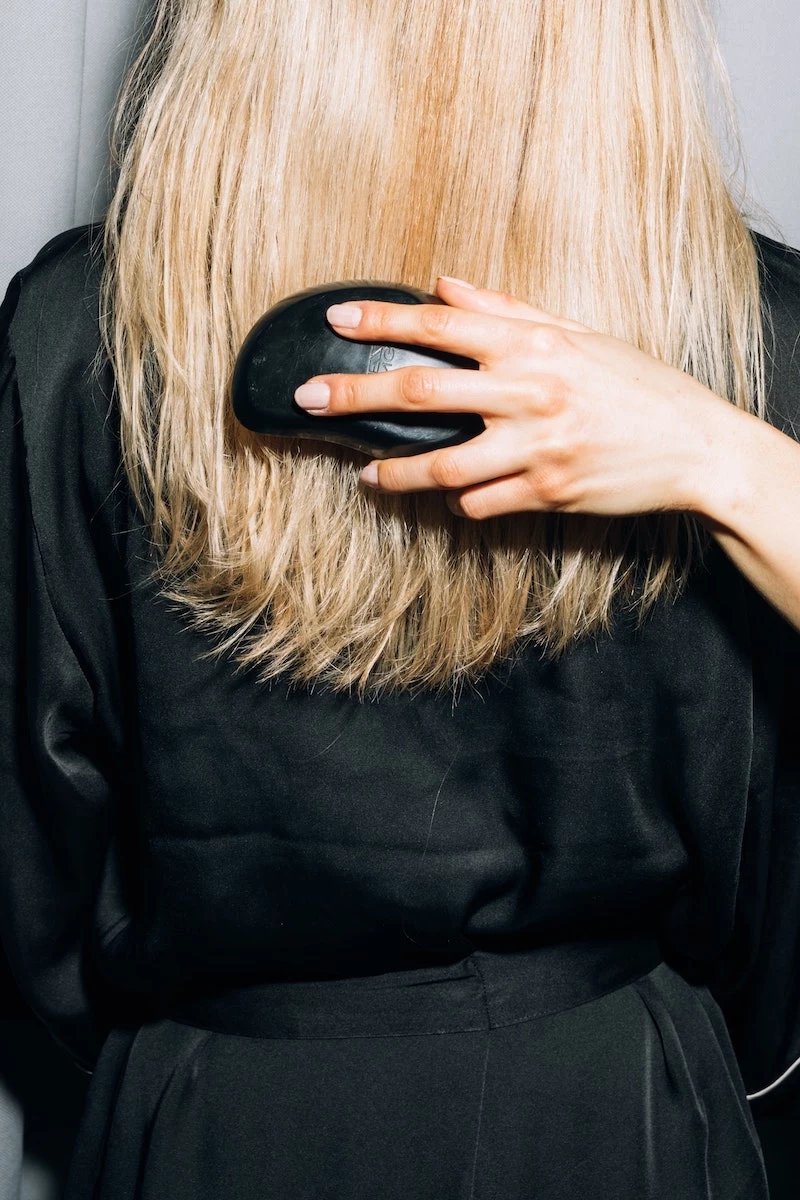
Once you get the hang of it, this whole routine for shoulder-length hair should only take about 15-20 minutes.
The Holy Grail: Dry Shampoo
Let’s be real, dry shampoo is a fine-haired person’s best friend. But it’s not just for soaking up oil on day two or three. It’s an incredible styling product for creating volume and texture on clean hair, too!
The trick is to spray it directly onto the roots from about 6-8 inches away, let it sit for a minute to absorb oil and work its magic, and then use your fingertips to massage it in like you’re shampooing. This gives your roots some grit and lift that lasts all day. A can will run you anywhere from $7 at the drugstore to $30 for a high-end version.
My 5-Minute Volume Hack: In a rush? Forget the full blow-dry. Just flip your hair upside down, blast the roots with a dryer for 60 seconds, flip back up, and hit the root area with a bit of dry shampoo or texturizing spray. It’s an instant refresh.
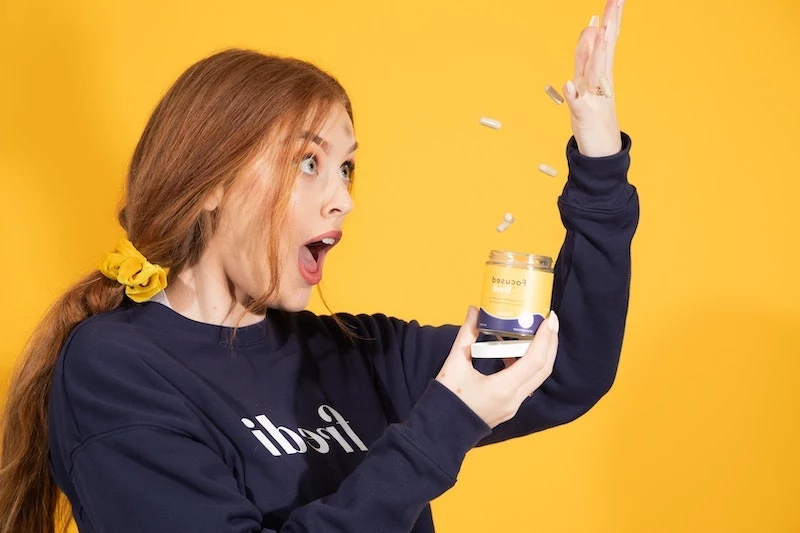
The Right Haircut Is Everything
No amount of styling can save a bad haircut. For fine hair, the goal is to create strong lines and strategic movement.
- Go for Blunt Ends: A blunt, one-length cut makes the bottom edge of your hair look thicker and healthier. Overly wispy or heavily textured ends can make fine hair look stringy.
- Be Smart About Layers: Too many short, choppy layers will remove weight and make your hair look thinner. But a few long, subtle layers can create beautiful movement.
- Length Matters: Super long hair can be heavy, pulling down from the roots and making it look flat. Bringing the length up to your collarbone or shoulders can often create an instant illusion of thickness and bounce.
Pro Tip: Want to make sure you and your stylist are on the same page? Try asking for “internal or invisible layers to build volume without losing my blunt ends.” It shows you’ve done your homework!

Food for Thought: Feeding Your Hair from the Inside
Okay, I’m a stylist, not a doctor, but I’ve seen it time and time again: what you eat directly impacts your hair. Your follicles are tiny factories that need the right raw materials to produce strong hair.
Think about getting enough protein (hair is literally made of it), iron (a super common cause of shedding), zinc, and B-vitamins. Eating a balanced diet with things like lean meat, fish, eggs, beans, and leafy greens gives your body the tools it needs.
A quick word on supplements, though. The market is flooded with “hair growth” pills, but please be careful. I remember a client who started taking massive doses of biotin she bought online. It actually ended up interfering with her regular lab work, causing a huge scare with her doctor. It’s a perfect example of why you should always consult a doctor before starting any new supplement. They can run a simple blood test to see if you’re even deficient in the first place.
When to Call for Backup
It’s so important to know when an issue is cosmetic and when it might be medical. My job is to help you with the appearance of your hair. A doctor’s job is to diagnose underlying issues.
See your stylist for: A great volumizing haircut, product advice, and in-salon treatments.
See your doctor or a dermatologist for: Sudden or major hair shedding, a widening part, bald patches, or a scalp that is itchy or painful.
If I see something concerning with a regular client, I always encourage them to check in with their physician. We’re a team, after all.
At the end of the day, creating thicker-looking hair is a journey of consistency. Some days will be better than others (hello, humidity!). Don’t get discouraged. The goal isn’t to have someone else’s hair, but to make your own the healthiest and most vibrant it can be.
Inspirational Gallery
Mousse: Best for all-over, lightweight volume. Applied to damp hair from roots to ends, a modern mousse like L’Oréal Professionnel Tecni.ART Full Volume Extra provides body without the ’80s crunch. It swells the hair shaft for a diffused, airy fullness.
Root Lifter: For targeted, high-impact lift right at the scalp. Sprays like Oribe’s Maximista Thickening Spray are aimed directly at the roots before blow-drying, creating a strong foundation that prevents hair from falling flat. Perfect for styles that need that extra oomph at the crown.
Did you know? Certain ingredients, like hydrolyzed rice protein, can temporarily increase the diameter of a single hair strand by up to 10% by lightly coating and swelling the cortex.
Can the way I wash my hair actually make a difference?
Absolutely. Try the ‘reverse washing’ method. Condition first, focusing only on the mid-lengths and ends. Let it sit for a few minutes, then rinse. Follow up with shampoo, concentrating on scrubbing the scalp. This technique protects fragile ends from the harshness of shampoo while ensuring your roots are squeaky clean and free from conditioner-related weight, giving you a much better lift from the start.
When your hair is about 80% dry, flip your head upside down. Direct your blow dryer at the roots, using your fingers to massage and lift the hair away from the scalp. This simple move fights gravity and trains your roots to stand up, creating a foundation of volume that lasts far longer than just drying your hair upright. Finish with a quick blast of cool air to set the shape before you flip back over.
- Creates instant, natural-looking lift at the crown.
- Cleverly conceals a wide part or thinning areas.
- Adds a touch of texture that helps hold your style all day.
The secret? The zig-zag part. Instead of a straight line, use the tail of a comb to trace a zig-zag pattern across the top of your head and let your hair fall naturally. It’s a two-second trick with a huge visual payoff.
A study in the International Journal of Trichology found that scalp health is directly linked to hair quality. An unhealthy scalp with inflammation or clogged follicles can lead to weaker, thinner-looking hair growth.
This means your journey to thicker-looking hair starts at the root. Product buildup, oil, and dead skin cells can smother your follicles, weighing hair down from the moment it emerges. Integrating a gentle scalp exfoliant, like the Christophe Robin Cleansing Purifying Scrub with Sea Salt, once a week can make a world of difference. It clears the runway, allowing your volumizing products to work more effectively on a clean base.
The one thing to splurge on: Your haircut is your architecture. A sharp, blunt cut on fine hair creates the strongest visual line, making ends appear much thicker and healthier. While you might be tempted by layers, ask your stylist for ‘ghost layers’ instead. These are subtle, internal layers that create movement and lift without sacrificing that crucial, dense perimeter.
Think beyond styling products and consider scalp concealers. These aren’t just for covering grays. A light dusting of a colored powder like Color Wow Root Cover Up along your part can make a surprisingly big difference. By reducing the contrast between your hair and scalp, it creates an illusion of density at the root, making your hair look instantly fuller.
Are hair supplements worth the hype?
For some, yes—if the cause of thinness is a nutritional deficiency. Look for formulas rich in Biotin, Iron, Zinc, and Vitamin D. Brands like Nutrafol or Viviscal are backed by clinical studies and target the nutritional building blocks of hair. However, they are a long-term commitment (expect to wait 3-6 months for visible results) and won’t work miracles if your fine hair is purely genetic. Think of them as fertilizing the soil, not changing the seed.
- Don’t apply heavy, silicone-based serums anywhere near the roots.
- Never skip heat protectant—fine hair is more susceptible to damage that makes it look thinner.
- Don’t use a towel to aggressively rub your hair dry; gently squeeze instead to protect the fragile cuticle.
- Avoid over-using dry shampoo, as buildup can weigh hair down and irritate the scalp.










